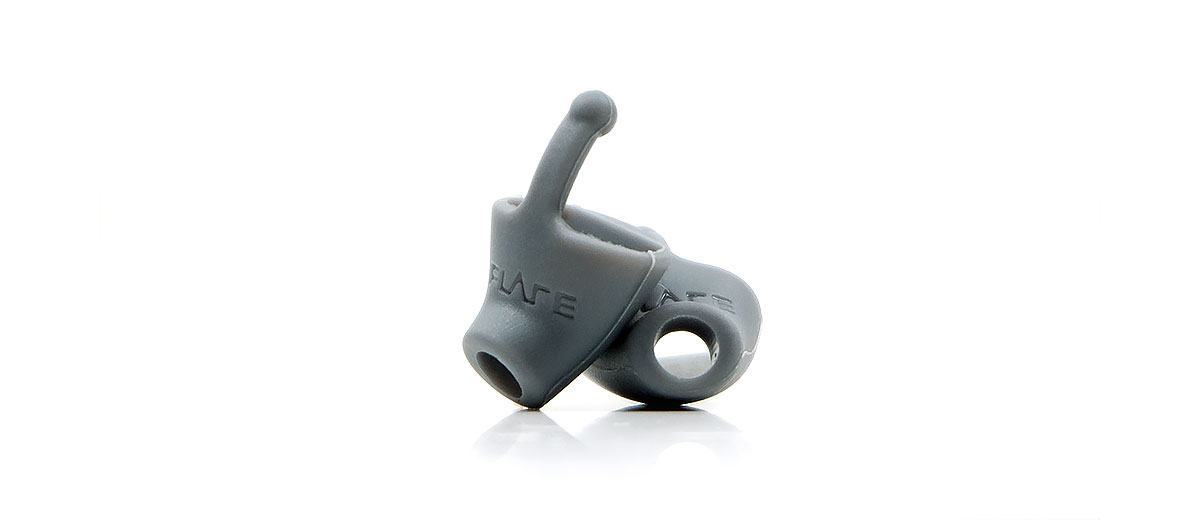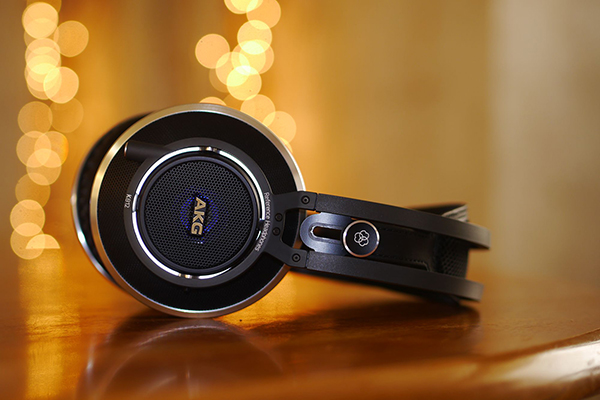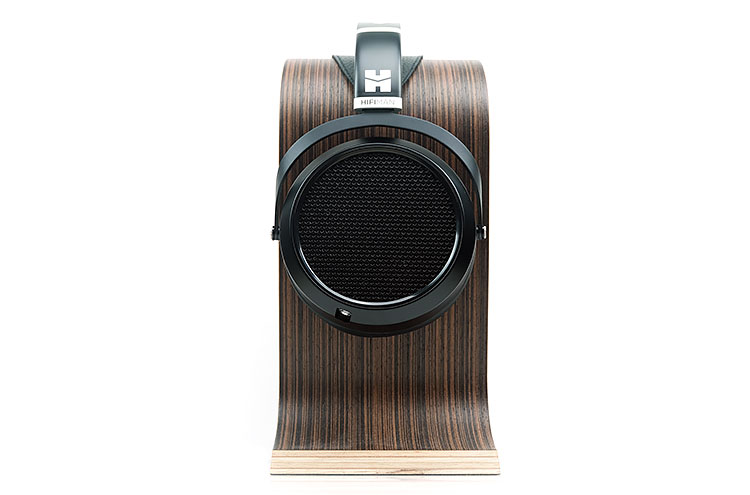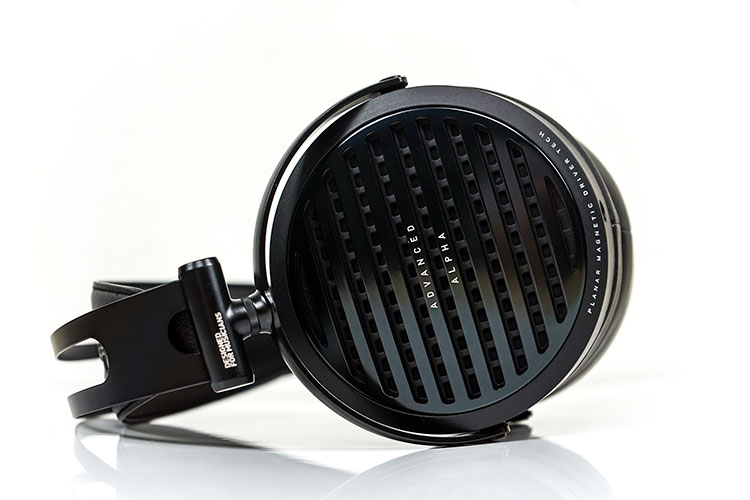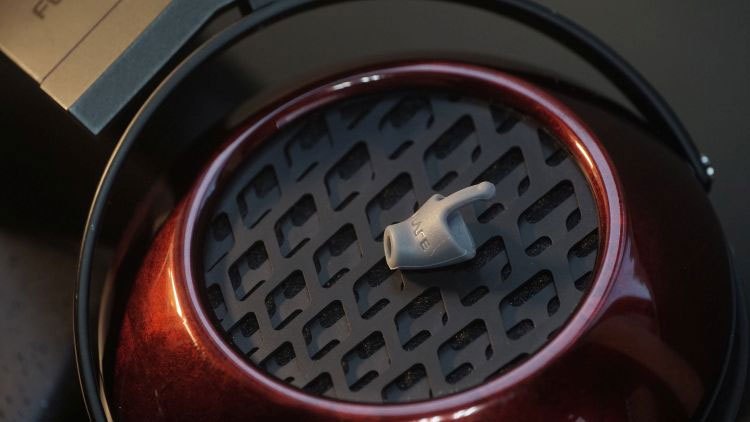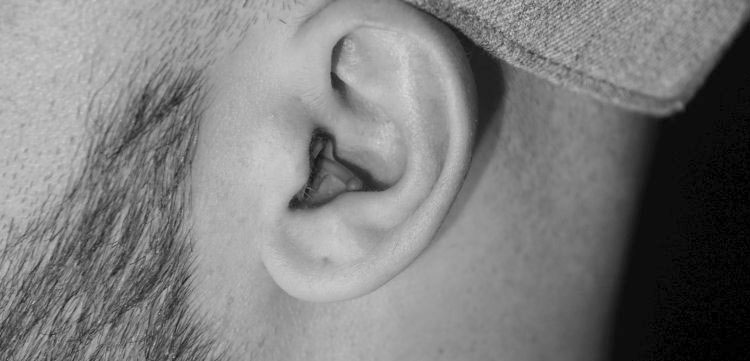Marcus
My testing experience with the Flare Calmer system centered on 3 headphones which I sometimes feel to be a shade on the aggressive or loose side for the upper mids and treble though by no means unbalanced. These include the AKG K812, Hifiman’s HE5SE, and the midrange Advanced Alpha planar.
Now, most of the time I tend to work a bit of desktop tube into the mix for the AKG and Advanced Alpha. In the case of the HE5SE, I ensure it has plenty of power to keep the top end from sounding too brittle. It can be an element of trial and error to get the harmonic balance right on these headphones.
Setup
For the AKG K812 and Advanced Alpha, I used iBasso’s DX220 MAX which is capable of up to 8.7Vrms balanced on a 300Ω load. That is a very healthy 235mW rating for a portable device and that kind of impedance demand. The DX200 MAX is a reference-grade source in terms of audio quality.
For the HE5SE, I reverted to the Violectrics class V281 with Oppo Digital’s clean Sabre ES9038PRO-infused desktop Sonica DAC as its source. The V281 is a discreet analog amplifier design capable of just over 4W balanced into a 50Ω and capable of driving the HE5SE. Its signature has plenty of low-end gusto but, is not an overly bright sounding amp.
AKG K812
The K812’s dynamic driver is tuned with a moderate mid-bass emphasis and a spikier 5-7k peak that can sometimes add a slightly harder overtone to its harmonic balance for percussion.
I do not have any issues with its tuning to around 1k and there is a broad warmish theme for the most part with smooher recordings. Push it hard though above 3-4k and it gets a little splashy. A consistent 3-4k dip simply serves to rob that splash of a bit of body and presence.
The change with the Calmer was absolutely instant and I suspect anyone with a half-decent set of ears can pick up exactly what is happening here.
I would say from 5-10k the K812 is getting a sustained damping effect dropping the dB elevation by a good 4-5dB or at least leveling it off. Certainly, the top-end is less spikey, percussion is more liquid-like in its attack and the instrumental body is now a little bit more ’rounded’ in tone.
Vocals also have a smoother tone, far less prone to artificial sibilance creeping down from the stock strident treble tuning. My only caveat is that some vocals lose a little bit of presence and there is less sparkle overall, particularly percussion.
Example
We used a test track, Magic Dance’s “The Starchild” from their 2014 Mirror of Dreams album. Magic Dance is kind of like how the Killers might sound if they made it big in the ’80s.
Now, this is a naturally bright and peppy track with plenty of airy swirly synth. However, the production also creates a very bright male vocal timbre with a bit too much emphasis on natural sibilance.
The stock K812 makes for an exciting delivery of this track with plenty of percussion presence and that drier harder-sounding male vocal. It sounds airy, and ethereal in staging but fatiguing after 1-2 plays.
With Calmer inserted that natural sibilance on the vocal delivery was properly controlled, and percussion lost a little bit of ‘bite’ as you would expect but not so much presence as synth layering north of 5k was very easy to pick out still.
Hifiman HE5SE
The HE5SE was the reinvention of the original woody planar, the HE5.
It was always a brighter experience in the Hifiman lineup and the HE5SE, though a bit more controlled than the original, it still more of that classic Hifiman mids to high tuning bias with a neutral but articulate low-end. Mids are excellent with above average though a shade on the dry side with a forward vocal delivery.
Typically, I run the HE5SE with a sweet-sounding solid-state or a SET just to add a bit more of a liquid overtone on the instrumental timbre and fatten up the body.
Amps like the Xi Audio Formula S work quite well in this regard, whereas more traditional resistor amps such as the Cayin iHA-6 can sound too sharp when paired with the HE5SE unless you have a very warm source.
For the test track, I used Def Leppard’s “Love Bites” from their classic 1987 Hysteria album. This is the remastered version and it’s a little feistier than the original, i.e. louder with a bit of clipping. Without the Calmer, percussion is super dominant in the mix. Vocals are bright and to the fore, natural sibilance can be emphasized.
With Calmer the 2k plus dB attenuation is very apparent. You lose the treble stridency with a more liquid tone in the percussion attack and generally a forgiving listening experience.
However, vocals seem a shade distant, or at least perceptibly so with a little less air and staging spaciousness.
I suspect the dB attenuation runs right through from the 2K marker so it is more of a wide spectrum damping than a narrow target.
To get the experience just right you might have to apply some minor PMEQ or EQ around 3-5k depending on your source app to tweak for personal listening preference on the HE5SE. This tweak is entirely preference-based, however, and not mandatory.
Advanced Alpha
The Alpha has a similar response to the K812 from the mids onwards with a peakish 3k to 5k curve which can pick up a little on odd-harmonic overtones and lead to a slightly shouty and hard-sounding vocal and upper mids timbre.
The low-end performs as any good planar should do with a fairly neutral and linear flat line up to about 1k and is not a major source of warmth.
In my original review, I felt a really good amp could get around that, particularly if you can churn out at least 1W into a 32Ω load on a good SET amp.
However, not everyone has that luxury, and with weaker-powered DAPs outside of the super smooth Cayin N6ii’s E01 motherboard, it can veer a little to that harder sound with an emphasized sibilant sound.
With the Flare Audio Calmer, I had an interesting change-up in the presentation. For one thing, the upper mids were nowhere near as pushed forward as the stock tuning.
Sibilance was gone but so also the percussion presence and treble energy. I suspect the dB attenuation here was more aggressive in shaping the final tuning compared to the K812’s response.
I would certainly agree the timbre is smoother, the attack is more liquid and the general tone is much more forgiving. However, the vocal presence might be a little too reserved for some.
I found the perfect balance for my ears by using the DX220 MAX PMEQ and adding about 2-3dB on a peaking filter with a Q factor of 0.7 around the 3k band which is the area that changes the most with the Calmer system. That injects a bit more presence and energy without it going anywhere near the peaky sibilant stock character.
Michael
My experience with the Calmer is slightly hit-and-miss, varying depending on which set of headphones I am using on. And I think that is the key here. There simply are some headphone models out there that this product won’t mesh with, yet still, others that will.
I’d like to share my thoughts with the community on why I believe some consumers have not experienced any alteration in any sound after purchasing.
I’ve read through hundreds of reviews via Trustpilot’s page for this product, which at the moment, stands at over 5,000 reviews for the Calmer. Some have stated that they heard no difference. Some have said they did hear a difference, but it was negative in fidelity compared to just not using the Calmer.
Some have said that it absolutely heightened the experience. 5,000+ reviews on one product are quite a lot, yet with three very different paths to consumer responses. I wanted to dig deeper into this and find out for myself what was going on.
Cross-Examination
The product is shaped like your average inner ear canal. This product clearly funnels sound waves into your ear, with more focus than what your natural canal has in terms of width.
A smaller pathway to your eardrum will change the sound, which baffled me when I read some reviews of consumers saying they heard absolutely no difference whatsoever.
That is truly shocking to me because closing the inner ear canal off just a bit and making it smaller should drastically, or, at least audibly, change the sound somehow. You are physically closing off your ear canal and focusing the sound through a slightly smaller replication of your canal. How that won’t change the sound somehow and how someone cannot hear that is beyond me.
The Calmer 100% affected the sound of everything in every test I made. So, I cannot attest to those other critiques who claimed literally no sound change whatsoever, as I find it an absurd sentiment.
Bass Testing
Swan Song Audio Headphones
Starting my benchmark out with the same track, sourced through Burson Audio Conductor 3x, and ran into the new Feliks Audio ANV Tube amplifier, my experience with this headphone remains the same as when I reviewed it.
I believe it is one of the better fun and musical-sounding headphones with very deep bass, even on stock and flat EQ. If I rate the quantity of bass at a 5/10 in quantity with the most bass light wooden plates installed.
Just as an example without the Calmer, I would rate the Calmer + Swan Song Audio Headphones itself by a solid roughly 15% in heft and bass quantity. Why? Well, the Calmer again, focuses the sound waves into a more narrow pathway to your eardrum.
By rights, bass frequencies should be heightened audibly. And they are. In fact, no headphones I tested with sounded the same on the low end when the Calmer was in the mix.
Fostex TH909
This headphone isn’t particularly bassy when no EQ is active. It isn’t until I EQ and DSP the hell out of it that the response really bumps up.
Let us use the middle ground rating again at 5/10 for bass quantity without the Calmer active and without any EQ whatever enabled. Swapping in the Calmer, which takes all of 3 seconds, the same song routing through the TH909 now feels noticeably more bass-heavy.
More so, it also feels denser overall. Perhaps a 15% boost yet again in bass quantity and density. The TH909 sound signature is moderate. With the Calmer, the full field experience got a little thicker and heftier.
Top to bottom, not only the bass but all the way to the treble. This wasn’t as noticeably apparent on the Swansongaudio headphone, because that headphone starts out very hefty and with a tamed top end. The TH909 sounds thinner overall and doesn’t have nearly as tamed and reserved of a top side.
Speaker Usage
Of course, I’ve tested with nearly every headphone I own, from budget to expensive. As well as my $2500 Harman Audio Citation Tower Speakers and Edifier S2000Pro‘s. The speaker and TV setup mirror headphones.
The Citations are bass bombs and have absurd Bass quantity, sub-level without the need for a sub. While set to 1 on the EQ for the Tower’s digital panel, the difference between using the Calmer and not using it is equally as apparent as with any other headphones I was using.
The low end is thicker, more focused, and direct feeling, while the entire spectrum becomes more intense and densely packed in tonality presentation overall. This is consistent over the entire testing phase, no matter what I used. The sound of my air conditioner gets lost quickly while using these and going about my daily YouTube grind.
Real-World Applications
Simply using this for voice interaction with others was extremely odd. Near-field voices felt less omnipresent and significantly focused right at me. Take the Calmer out while someone is talking to you nearby and the entire experience shifts into a more open, but less interactive and engaging conversation on a physical level.
The Calmer directing sounds into a narrow structure in my ear forces my brain to absolutely focus on that person much, much more than without. It somewhat drowns out background noise and the more powerful sound waves are the only ones that make it into my ear, for the most part.
A great example is trees and leaves in the wind. Standing outside with the Calmer and speaking to someone results in my not acknowledging the existence of the wind blowing the leaves in the trees nearby.
Without them in, the first thing I noticed was how loud the trees and wind actually were at that moment. (If you have ADHD or any attention disorder and also have the Calmer, please comment or send me an email telling me your experience.
I ask because the Calmer makes me, someone without ADHD, feel more attentive when someone is speaking to me. It is hard to look away or daze away in my mind).
Our Verdict
Michael
The Calmer limits your ear canal’s size. That is just science. It is a thing that goes in your ear canal that makes it a little smaller than it naturally is, focusing the sound into a more narrow pathway just like Custom IEM’s offer.
The results were vividly conclusive and consistent throughout the entire review process. No matter what I used, the bass felt more hefty and dense, the top-end felt more reserved and with a penchant for limiting top-end background noise.
The fidelity remained unchanged until I used and tested with something bassy or bass-boosting active. The bassier the product, the thicker it felt and there was a point where too much bass boost + the Calmer resulted in excessive mud and an overly thick sound signature.
I can safely say, that watching a movie through my Citation Towers, something like Avengers Endgame, absolutely entrances me and makes me feel more engaged due to the focused soundwaves feeling like they are beamed right at me and not dispersing throughout my room.
Marcus
I agree with Mike they do work, and it is very obvious in how they damp down from around that 2K marker on all the headphones I tested. They have the ability to really smooth out any feisty top-end bias and produce a much smoother sound. In the case of the AKG K812, I can just plug in the Calmer in each ear and play away.
With the other two tested headphones, some minor PMEQ helps with fine-tuning for the right balance. I suspect that is down to the way Calmer applies its ‘magic’ with a broad spectrum damping across the board from the mids onwards.
No headphone is consistently peaky across the board and quite often a peak on the treble is there to balance out some low-end warmth. If you target 2k onwards you could end up with a dark sound if the low-end is already elevated.
What I am finding though is that the application of PMEQ is much easier to apply when combined with Calmer and that is a plus in my book.
Louis
The Flare Calmers works, plain and simple. The science behind it is simple. I do not understand why no one else thought of it sooner. My thoughts are going through the myriad of possible usage scenarios even as I finish this review. What else can be done with this and how can it be elevated?
Calmer is a good name and describes what the product does. We all need calm especially nowadays. Ear upgrade for under 30 dollars you say? It will improve the sound for many people that’s for sure!
Flare Audio Calmer Specifications
- Length: 20mm
- Width: 12.6mm
- Weight: 0.5g
- Patent-pending technology | 2004011.9
- Reduces stress trigger frequencies without muffling sound
- Comfortable to wear, one size fits all
- Molded in a soft-touch durable silicone
- Independently tested by ISVR (Institute of Sound and Vibration Research)

